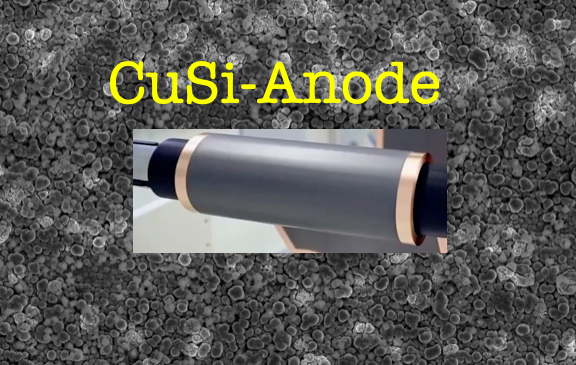Switching from graphite to silicon
Silicon (Si) as an anode material is a key component for increasing the energy density of nowadays Lithium-Ion Batteries (LIB). Graphite is the most commonly used anode material in commercial LIB. The drawback of graphite is its lowest specific storage capacity of approximately 370 mAhg-1. In contrast, Si theoretically possesses, with the exception of lithium, the highest specific capacity among anode materials at room temperature (approximately 4200 mAhg-1). Challenges arise in using Si due to the significant volume change of the host material during the lithiation process (up to approximately 400%). Additionally, there is chemical instability at the anodic interface with the electrolyte, the so-called Solid-Electrolyte Interface (SEI), over cycling.
Our battery activities focus on developing of high-capacity silicon anode materials using a dry process combining the use of sputtering and Flash Lamp Annealing (FLA). This approach enables a considerable reduction of the volume change of the Si after lithiation and an improved battery performance in full-cell configurations, e.g. using a cathode material of lithium iron phosphate and a liquid electrolyte of LiPF6 (in ethylene carbonate and dimethyl carbonate solution). Such coin cells achieve a surface capacity of up to 2 mAh/cm2, more than 100 cycles, and a stable coulombic efficiency of up to 98%.
Current research work in overview:
SEI stabilization
By means of the of the ion implantation the surface of the Si anode will be passivated. The formation of a stable layer after the first cycle can prevent the growth of the SEI layer during the cycling and thus improve the cycle life of the battery cell.
Increasing the amount of Si
Since the weight of Si per surface and the electrode density are determined by the amount of Si as active material in an electrode, the aim here is to produce a Si anode with a higher layer thickness (of up to 50 µm) of Si by means of sequential deposition.
Projects
FKLIB-Project
VIP+-BMBF, FKZ-03VP11091 (07/2023–06/2026):
Integrated high-capacity solid-state Li-ion battery
The aim of the project is to validate a novel, cost-effective solid-state lithium-ion battery (FKLIB) directly integrated on a silicon wafer. The core component of the FKLIB is a copper-silicide-anode, produced using a combination of Si sputtering and flash lamp annealing. Other components of the FKLIB consist of a solid electrolyte made of hybrid ceramic-polymer and a cathode made of lithium iron phosphate. Applications of such integrated FKLIBs range from sensor chips, flexible electronics, wearables, energy harvesting, Internet of Things to medical implants. As a model application, an integrated FKLIB serves to power a sensor chip.
Besides to HZDR (coordinator), the project consortium includes Fraunhofer Institute for All Silicon System Integration Dresden (ASSID), Fraunhofer Institute for Reliability and Microintegration (IZM) in Berlin, as well as TU Bergakademie Freiberg/ Institute for Experimental Physics.
SiNergy-Project
Saxon Development Bank, FKZ-100256790 (09/2017- 12/2019):
Development of silicon-based anode materials for secondary batteries with high energy densities
In addition to the HZDR, TU Bergakademie Freiberg/Institute for Experimental Physics and NORAFIN GmbH took part in the project consortium.

